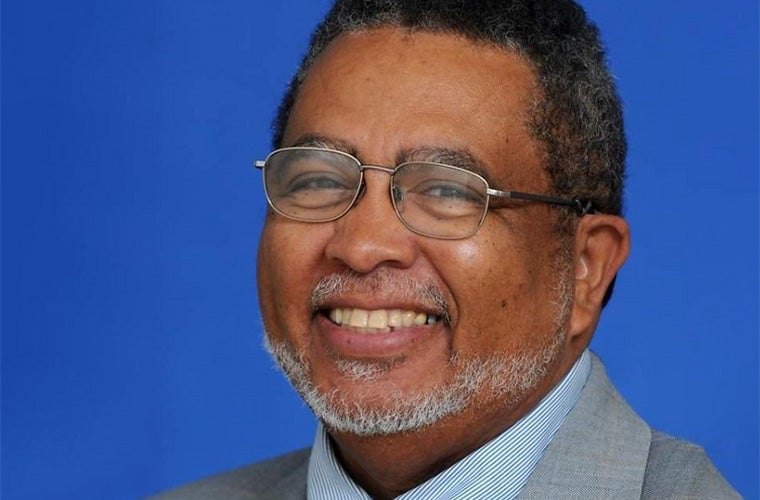At the Schermerhorn
An Awful lot of Americana for Opening Night
The new season is here! The Nashville Symphony held their opening night gala on September 9th with a concert that featured four pieces of American music. Two were written, arranged, and performed by celebrated banjoist Bela Fleck—his concerto The Impostor: Concerto for Banjo and an arrangement of George Gershwin’s Rhapsody in Blue in which the banjo played the piano part. The other two pieces included Adolphus Hailstork’s An American Port of Call (1985) and Aaron Copland’s Suite from Appalachian Spring (1945 orchestration). 
Adolphus Hailstork has an interesting relationship with the Nashville Symphony. As the composer related in 2019, Emeritus Nashville conductor Thor Johnson (1967-1975) gave Hailstorm his first commission on behalf of the department store J.C. Penny for which the composer wrote Celebration. Like Celebration, Hailstork’s Port of Call is amazing. Written, as the composer states, to depict the “…strident (and occasionally tender and even mysterious) energy of a busy American port city. The great port of Norfolk, Virginia […] was the direct inspiration.” Inspirations of both Gershwin and Copland can be heard in the great movement that is urbane and effervescent in its excitement. Here the Nashville brass were particularly bright and clear, opening the evening with remarkable zeal.
This was followed by Fleck’s The Impostor: Concerto for Banjo, composed 2010-11, dedicated to Earl Scruggs, and recorded and released by the Nashville Symphony in 2018. One imagines, as corroborated by hearing it, that the title refers to the presence of a banjo in a classical genre. Indeed, the program he delineated for a performance in Oregon states:
“A musician like myself can feel that way pretty regularly, even though the point of much of what I do is to attempt to find ways to fit naturally into many diverse environments. I often do feel like an impostor, and if anyone ever figured out the truth, I’m certain that I’d be ejected, immediately. So maybe the banjo player snuck into the orchestra with a disguise on (Infiltration), was pretty convincing that he belonged there (Integration), but at some point he let the cat out of the bag (Truth Revealed): He/I am a low-class banjo playing scuffler and should be tossed out forthwith! But that’s just one interpretation.”
Although, in the program notes, there is some effort made to point out that the work is “unlike a traditional string concerto” it is actually rather similar, especially from a formal standpoint. There is a clear double exposition (orchestra opens then soloist reiterates) and a moment of recapitulation. There are also clear influences, Gershwin’s woodwinds, as well as Bach and Beethoven are apparent at different moments. At the height of the first movement’s development, the imitative counterpoint becomes quite interesting.

The swapping of motives with the orchestra becomes grows even more intense in the second movement, to the point which at one particular moment the banjo falls into a hocket with the basses. There is also a certain brilliance and pastoral nature to the orchestration that brings to mind Joaquin Rodgrigo’s Concierto de Aranjuez. Fleck’s virtuosity is unsurpassed, and while there are other interesting moments, this composition is remarkably idiosyncratic to his instrument: it is a perfect vehicle for that virtuosity.
After intermission the Symphony performed Copland’s great centerpiece of American Music, the Suite from Appalachian Spring as arranged from the ballet of the same title in 1945. I have heard this composition many, many times, but it still strikes my feelings when done right, and Saturday it was. While the theme from “Simple Gifts” was played quite well, it was the gentle framing of the suite, the “suffused light,” that brought nostalgic chills…something Maestro Guerrero is very talented at creating. Simply, it was the best performance of the evening.
The final work was Gershwin’s Rhapsody in Blue arranged by Fleck so that the banjo replaced the piano. It was a plainly difficult and virtuosic accomplishment, and one wonders how many living performers could have pulled it off. That said, I am not sure that the new version improved or altered Gershwin’s original work in any perceptibly positive way—just because one can do something, doesn’t necessarily mean they should. And when combined with the encore, which included themes from Star Wars (Darth Banjo?) and an obligatory rendition of variations on the theme from the Beverly Hillbillies, it made me wish I had gotten to hear the orchestra more that evening.
The Nashville Symphony has a long history of working with the country, popular, and folk genres that flourish in and nourish Nashville, but throughout one constant has remained. From the Nashville Platinum album forty years ago (which bankrupted the orchestra) to today, when they give up primacy to these musics and artists, their position as a classical orchestra is diminished. I understand that the “pops” concerts help to pay the bills, and in the absence of a separate pops orchestra, these concerts will continue, but I also hope that the Nashville Symphony will continue to be a stalwart protector of the excellent in the performance of American art music. With a new incoming concert master and the rumored departure of Maestro Guerrero, I fear that the powers that remain in the Schermerhorn will choose to move programs in the direction of becoming viral instead of remaining excellent. That aside, it looks to be a great season, opening this coming weekend with The Rite of Spring on September 14-16.



